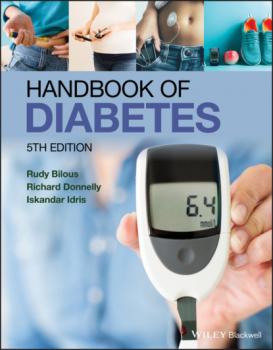ТОП просматриваемых книг сайта:
Медицина
Различные книги в жанре Медицина, доступные для чтения и скачиванияАннотация
Migräne und Kopfschmerzen betreffen uns alle: direkt oder indirekt, medizinisch, aber auch volkswirtschaftlich. Dieses Buch gibt Aufschluss über die verschiedenen Arten von Kopfschmerzen und deren Behandlung. Es bietet ein breites Spektrum an Themen – von der Diagnose und der Behandlung bis zur philosophischen Beleuchtung und geschichtlichen Aufarbeitung der Kopfschmerzen – sowie Spezialthemen wie Frau und Migräne und Kopfschmerzen bei Kindern. Zudem führt es durch das breit gefächerte, multimodale Therapiespektrum der Schul- und Komplementärmedizin und bietet Hilfe in Notfallsituationen. Ebenso dient es als Orientierungs- und Interpretationshilfe im Informationsdschungel des Internets sowie der Wissensvertiefung. Behilflich dabei sind Abbildungen und wissenschaftliche Zeichnungen, die entwickelt wurden, um die komplexen Zusammenhänge besser verstehen zu können. Migräne & Kopfschmerzen ist ein, im deutschsprachigen Raum, einmaliges Nachschlagewerk, welches umfassend, kompetent und leicht verständlich durch die Thematik führt und mit detailreichen Illustrationen besticht.
Аннотация
The Nursing Associate’s Handbook of Clinical Skills The Nursing Associate’s Handbook of Clinical Skills provides evidence-based guidance for those undertaking the newly developed Nursing Associate (NA) role that bridges the gap between the Health Care Assistant (HCA) and the Registered Nurse (RN). Structured around the latest Nursing and Midwifery Council (NMC) Proficiencies, this invaluable handbook helps the prospective Nursing Associates develop the skills and core competencies required to succeed in a broad range of healthcare contexts—covering more than 90 procedures, and communication and relationship management skills.This timely resource features contributions from a team of experienced clinicians and academics, addressing clinical procedures on topics including skin integrity, nutrition and hydration, mobility and safety, respiratory care, managing infection, administering medicine, and end of life care. Clear, accessible chapters contain a wealth of effective learning tools, including self-assessment tests, review questions, links to electronic resources, supporting evidence, and more. This must-have textbook:Helps trainee Nursing Associates to develop and refine their skills, and demonstrate proficiency in offering care and supportReflects current NMC annexes, providing practical guidance on a diverse range of communication skills, strategies and proceduresCovers the central elements of Nursing Associate care provision, including delivery, monitoring, and reviewingIncludes colour illustrations, photographs, tables, charts, graphs, and algorithms designed to develop skills and demonstrate the links between theory and practicePresenting the principles of care essential for meeting the needs of patients in dynamic health and social care environments, The Nursing Associate’s Handbook of Clinical Skills is an indispensable guide for trainee Nursing Associates, as well as for health and social care assistants and those returning to practice.
Аннотация
Efforts to improve the quality of healthcare have failed to achieve a meaningful and sustainable improvement. Patients continue to experience fragmented, inconvenient, and unsafe care while providers are increasingly becoming overburdened with administrative tasks. The need for change is clear. Healthcare professionals need to take on new leadership roles in quality improvement (QI) projects to effect real change. The Quality Improvement Challenge in Healthcare equips readers with the skills and knowledge required to develop and implement successful operational improvement initiatives. Designed for healthcare providers seeking to apply QI in practice, this valuable resource delivers step-by-step guidance on improvement methodology, team dynamics, and organizational change management in the context of real-world healthcare environments. The text integrates the principles and practices of Lean Six Sigma, human-centered design, and neurosciences to present a field-tested framework. Detailed yet accessible chapters cover topics including identifying and prioritizing the problem, developing improvement ideas, defining the scope of the project, organizing the QI team, implementing and sustaining the improvement, and much more. Clearly explaining each step of the improvement process, this practical guide: Presents the material in a logical sequence, gradually introducing each step of the process with clearly defined workflow templates Features a wealth of examples demonstrating QI application, and case studies emphasizing key concepts to highlight successful and unsuccessful improvement initiatives Includes end-of-chapter exercises and review questions for assessing and reinforcing comprehension Offers practical tips and advice on communicating effectively, leading a team meeting, conducting a tollgate review, and motivating people to change Leading QI projects requires a specific set of skills not taught in medical school. The Quality Improvement Challenge in Healthcare bridges this gap for experienced and trainee healthcare providers, and serves as an important reference for residency program directors, physician educators, healthcare leaders, and health-related professional organizations.
Аннотация
The Handbook of Diabetes provides concise and efficient coverage of the diagnosis, epidemiology, and management of diabetes and its complications. Containing hundreds of attractive colour diagrams, illustrations, and clinical photographs, this popular quick-reference guide focuses on the management and measurement of diabetes mellitus with highly visual references. Now in its fifth edition, this market-leading book aligns with the most recent guidelines from the American Diabetes Association (ADA), the European Association for the Study of Diabetes (EASD), Diabetes UK, and the National Institute for Health and Care Excellence (NICE), presenting authoritative clinical coverage of diabetes in an accessible format with rich pedagogical features. Five new chapters provide detailed coverage of liver disease, diabetes education, bariatric surgery, diabetes and cancer, and the use of incretin-based therapies and SGLT2 Inhibitors in the management of Type II diabetes Updated and expanded topics include the relation between hypoglycaemia and dementia, anxiety and depression, the NICE Quality and Outcomes Framework (QOF), and the impacts of diabetes to self-care, mental health, and decision-making Provides a wealth of pedagogical features such as vignettes and case histories, important learning points, summaries of key clinical trials, and links to further readings Handbook of Diabetes, remains the essential practical companion for all health professionals involved in managing patients with diabetes, and an up-to-date reference for diabetes and endocrinology researchers, scientists, and academics.










